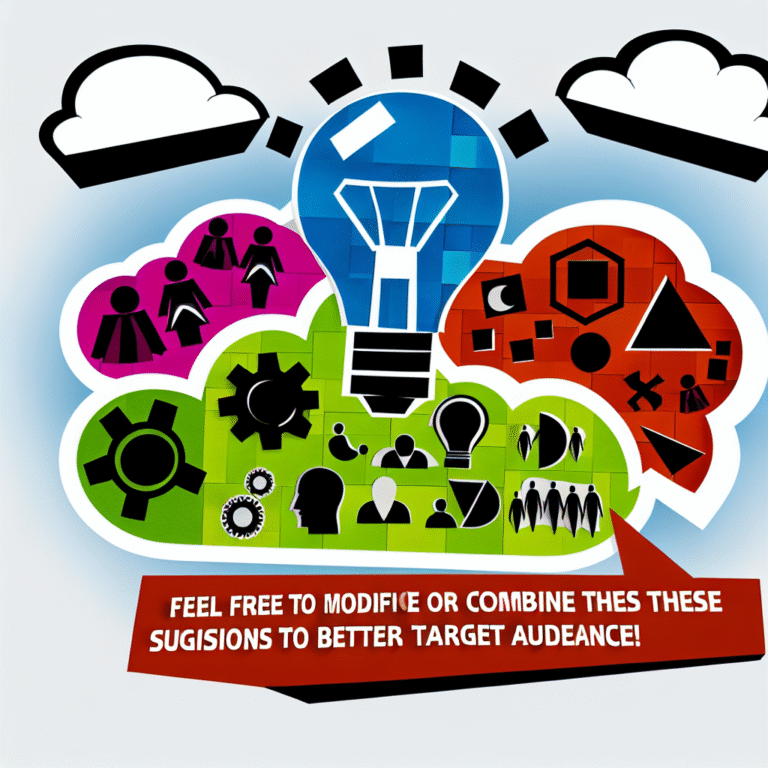
Mindfulness on the Go: Essential Strategies to Manage Anxiety Anywhere
Introduction
In a world that never stops moving, it’s easy to feel overwhelmed and anxious. The pressures of daily life—work commitments, family responsibilities, and social obligations—can often spiral into a whirlwind of stress. This is where Mindfulness on the Go: Strategies to Manage Anxiety Anywhere come into play. Mindfulness is not just a practice reserved for quiet meditation sessions; it can be seamlessly integrated into our fast-paced lives. This article will guide you through actionable strategies to harness mindfulness anywhere, whether you’re commuting, at work, or even in line at the grocery store.
The Rising Tide of Anxiety
Recent studies indicate that anxiety disorders affect roughly 40 million adults in the U.S. alone, making it one of the most common mental health issues. These staggering numbers underscore the importance of developing effective coping strategies. Integrating mindfulness into your daily routine can help mitigate these feelings of anxiety and create a more balanced life.
What is Mindfulness?
Mindfulness is the practice of being present and fully engaged with the current moment, without judgment. According to Jon Kabat-Zinn, the founder of the Mindfulness-Based Stress Reduction Program, mindfulness involves “paying attention in a particular way: on purpose, in the present moment, and nonjudgmentally.” This practice provides a mental toolkit for managing anxiety and stress—something that can be accessed anytime, anywhere.
The Science Behind Mindfulness and Anxiety
Research has shown that practicing mindfulness can have a profound effect on anxiety levels. A study published in JAMA Internal Medicine found that mindfulness meditation programs can significantly improve anxiety, depression, and pain. Similarly, a meta-analysis demonstrated that individuals who engage in mindfulness practices report reduced stress and an increased sense of well-being.
Strategies for Mindfulness on the Go
1. Mindful Breathing: Your Portable Anchor
What It Is: Mindful breathing involves focusing your attention on your breath, allowing you to ground yourself in the current moment.
How to Do It:
- Find a comfortable position: Whether sitting or standing, ensure your body feels at ease.
- Close your eyes if possible: This will limit distractions and enhance focus.
- Inhale deeply: Take a slow, deep breath through your nose, filling your belly rather than your chest.
- Exhale slowly: Release the breath through your mouth, allowing stress and tension to exit your body.
Real-World Application: A corporate executive reported using mindful breathing techniques during stressful meetings. By taking just a minute to focus on his breathing, he noticed a significant reduction in anxiety, leading to more effective communication and decision-making.
2. Mindful Walks: The Power of Your Feet
What It Is: Mindful walking engages both your body and mind, helping to reduce anxiety through gentle movement.
How to Do It:
- Initiate the walk: Start walking slowly and notice how your feet lift off the ground and touch back down.
- Engage your senses: Pay attention to the sounds around you, the sensation of the ground beneath your feet, and the air on your skin.
- Reflect on movement: Focus on the rhythm of your steps, allowing each breath to sync with your pace.
Real-World Application: A busy student utilized mindful walking between classes. By consciously engaging with her environment, she could reduce anxious thoughts about upcoming exams and feel more present.
3. Mindful Eating: Reconnect with Your Food
What It Is: Mindful eating involves being fully present during meals, allowing you to appreciate each bite and recognize feelings of hunger and fullness.
How to Do It:
- Focus on your food: Take a moment to notice the colors, textures, and aromas of what you’re eating.
- Chew slowly: Aim to savor each bite, noticing how flavors evolve.
- Listen to your body: Pay attention to when you’re really hungry and when you’re just eating out of habit.
Real-World Application: A case study from a nutritionist found that clients who practiced mindful eating reported a reduction in anxiety related to food choices and body image. This shift also led to healthier eating habits overall.
Breaking Down the Myths: Misconceptions About Mindfulness
Myth: Mindfulness requires a lot of time.
- Reality: Mindfulness can be practiced in as little as a few minutes a day.
Myth: Mindfulness is only for certain types of people.
- Reality: Anyone can practice mindfulness, regardless of background or experience.
- Myth: Mindfulness is about emptying the mind.
- Reality: It’s about focusing your attention, not devoiding it.
Case Study Insights
Case Study 1: Mindfulness in Healthcare
A healthcare facility integrated mindfulness training into its staff development program. Nurses and doctors reported decreased burnout and increased compassion in patient interactions. This illustrates how Mindfulness on the Go: Strategies to Manage Anxiety Anywhere can foster not only individual well-being but also a supportive community atmosphere.
Case Study 2: School Programs
Several schools have adopted mindfulness programs, teaching students to practice short mindfulness exercises during transitions between classes. Reports indicated increased focus and decreased anxiety among students, proving that these methods are adaptable even in high-energy environments.
Tools and Resources for Mindfulness on the Go
| Tool/Resource | Description | Format |
|---|---|---|
| Mindfulness Apps | Apps like Headspace or Calm offer guided meditations. | Mobile application |
| Guided Meditations | Many websites provide free, short meditations for busy days. | Online audio/video |
| Books | Literature on mindfulness—e.g., "The Miracle of Mindfulness." | Print and e-book |
Conclusion
Being mindful doesn’t have to be a monumental effort; it can be a simple yet powerful shift in perspective. Mindfulness on the Go: Strategies to Manage Anxiety Anywhere equips you with the tools to bring mindfulness into your daily life, offering a refuge from anxiety no matter where you find yourself. Start small, be consistent, and watch as your relationship with anxiety transforms for the better.
FAQs
1. How long should I practice mindfulness each day?
- Even a few minutes of mindfulness practice can be effective. Aim to gradually increase this time as it becomes more comfortable.
2. Can mindfulness help with physical symptoms of anxiety?
- Yes, mindfulness can reduce muscle tension and physical discomfort linked to anxiety.
3. What if I can’t quiet my mind?
- It’s normal for the mind to wander. Acknowledge those thoughts and gently guide your focus back to your breath or the present moment.
4. Do I need a quiet space for mindfulness practice?
- Not at all! Mindfulness can be practiced anywhere. Find what works for you in different environments.
5. How do I stay motivated to practice mindfulness?
- Start with small, achievable goals and track your progress. Consider joining a community or group for shared motivation.
By incorporating these strategies into your daily routine, you can find peace and presence no matter where life takes you. Embrace the journey of mindfulness and watch your anxiety fade.













